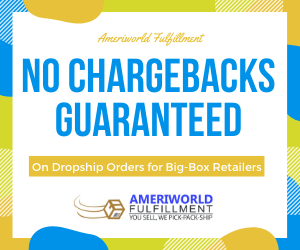
How to Discover Your Ideal Buyer?
Knowing your Ideal buyer, A.K.A. “Buyer Personas” is essential for effective marketing, product development, pricing, and overall business strategy. It enables you to align your efforts with your customers’ needs and preferences, ultimately leading to increased sales, customer satisfaction, and long-term success.
Below we share a few useful tips to develop an accurate Buyer Persona that can actually be used to better understand your sales funnel and to target your marketing campaigns.
How to Identify My Customer Persona?
- Define your product: Clearly define what your product offers, its features, benefits, and unique selling points. Understand how it solves a problem or fulfills a need in the market.
- Conduct market research: Gather data about the market you’re entering. Identify the size of the market, its growth potential, and any existing competitors. Use surveys, interviews, and online research to gather insights about potential customers.
- Create buyer personas: Based on your research, develop detailed profiles of your ideal customers. Consider demographic information (age, gender, location), psychographic information (interests, values, lifestyle), and behavior patterns (buying habits, online/offline preferences).
- Analyze customer data: If you already have existing customers, analyze their data to identify patterns. Look for common characteristics, preferences, and purchase behavior. This information can help you identify similar prospects.
- Identify pain points: Determine the problems or challenges your product addresses. Understand the pain points that your target customers are experiencing and how your product can alleviate them.
- Competitive analysis: Assess your competitors’ customer base and target market. Identify any gaps or opportunities they may have missed, and differentiate your product accordingly to attract customers.
- Engage with your audience: Interact with potential customers through social media, forums, industry events, and online communities. Observe their discussions, questions, and feedback to gain insights into their needs and preferences.
- Refine your marketing message: Craft a compelling marketing message that resonates with your target audience. Highlight the specific benefits and value your product brings to solve their problems or fulfill their needs.
- Test and iterate: Launch your product to a small segment of your target market and gather feedback. This feedback will help you refine your product and marketing strategies based on real-world responses.
- Track and measure: Use analytics tools to track customer engagement, conversions, and sales. Monitor the performance of your marketing efforts and make adjustments as needed to optimize your targeting and reach.
Remember that identifying the ideal buyer is an ongoing process. As your business grows and evolves, continuously reassess your target market and adjust your strategies to stay aligned with your customer’s changing needs and preferences.
How to use the Buyer Persona?
Knowing your customer profile or Buyer Persona is crucial for a brand that sells consumer goods products for several reasons:
- Targeted Marketing: Understanding your buyer persona helps you create more focused and effective marketing campaigns. When you know who your customers are, you can tailor your messaging, imagery, and advertising channels to resonate with them specifically. This results in better engagement and conversion rates.
- Product Development: Knowing your buyer persona informs product development. You can design products that meet the needs, preferences, and pain points of your target audience. This not only increases the likelihood of product success but also reduces the risk of launching products that don’t resonate with your customers.
- Pricing Strategy: Buyer persona can influence your pricing strategy. Some customer segments may be willing to pay a premium for certain features or brand value, while others may be more price-sensitive. Understanding these differences helps you set prices that maximize profitability.
- Inventory Management: Buyer persona can help you anticipate demand. If you know your customer’s buying habits, you can better manage your inventory, reduce overstocking or understocking, and minimize associated costs.
- Customer Service: Different buyer personas may have unique support needs. Tailoring your customer service and support channels to cater to these needs can improve customer satisfaction and loyalty.
- Expansion and Market Entry: When considering entering new markets or expanding your product lines, knowing your customers’ profiles in those regions or for those new products is vital. It helps you adapt your strategies to local tastes and preferences.
- Competitive Advantage: Understanding your customers better than your competitors can provide a competitive advantage. It enables you to differentiate your products and services, creating a stronger brand image and customer loyalty.
- Feedback and Improvement: Gathering feedback from your buyer personas allows you to continuously improve your products and services. You can refine your offerings based on customer suggestions and address any issues that arise.
- Risk Mitigation: Understanding your customers can help you identify potential risks or challenges early on. For example, if you notice a shift in customer preferences or a decrease in demand, you can proactively adapt your strategies to mitigate these risks.
- Return on Investment (ROI): Targeting your marketing efforts and resources toward the right customer segments can significantly improve your ROI. Instead of spending resources broadly, you can invest where it matters most.
We hope that these two lists come in handy when developing your marketing strategy. Don’t hesitate to reach out if you want to share your feedback, or if you need a fulfillment 3PL to pick-pack-ship your orders!
